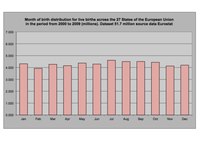
Photo from wikipedia
Purpose. Increasing anthropometric measures bring considerable spinal loads during sports practice, which inversely affects the adaptation abilities of the spinal structures; this in turn influences the spinal curvatures. The study… Click to show full abstract
Purpose. Increasing anthropometric measures bring considerable spinal loads during sports practice, which inversely affects the adaptation abilities of the spinal structures; this in turn influences the spinal curvatures. The study was conducted to explore the relationship between anthropometric measures and sagittal spinal curvatures in handball players. Method. The total of 83 male handball players were divided into 2 groups, depending on their body height: group 1 (age, 23.62 ± 2.07 years) consisted of 40 handball players with height above average, group 2 (age, 24.63 ± 2.58 years) consisted of 43 handball players with height below average. The thoracic and lumbar curvatures and trunk height were measured with the Formetric III 4D spine and posture analysis system. Results. The thoracic kyphosis of group 1 was significantly higher than that of group 2 (p = 0.038), without a significant difference in lumbar lordosis (p = 0.312), and significant difference in the coefficient of compensation between thoracic kyphosis and lumbar lordosis (p = 0.026). Group 1 showed strong positive correlation between body height and kyphotic angle (r = 0.897), and moderate positive correlation with lordosis angle (r = 0.496). In group 2, there was weak positive correlation with kyphotic angle (r = 0.381), and weak negative correlation with lumbar lordosis angle (r = –0.355). Conclusions. Increasing body height of handball players is associated with bigger kyphotic and lordotic angles. Owing to frequent sagittal asymmetric overloading of the spine during handball training, exercises that help maintain good posture and correct the thoracic kyphosis are required, especially for taller players.
Journal Title: Human Movement
Year Published: 2017
Link to full text (if available)
Share on Social Media: Sign Up to like & get
recommendations!